| index| | introduction of dinosaurs| | Mamenxi dinosaurs | | the relics of dinosaurs| | the value of dinosaurs| | special topic| | about ourselves | | contribution of the team | | the map of website |
| introduction of dinosaurs| | Kinds of Dinosaurs | |||||||||||||||||||||||||||||||||
|
||||||||||||||||||||||||||||||||||
| (1)Brontosaurus: Some of the dinosaurs’ body was very large, such as the Brontosaurus. In the Jurassic, the Earth's climate was warm and humid, everywhere was lush forests and because of the rich plant food, the herbivorous dinosaurs were prosperous, the brontosauri were also active at this time in the plain in North America. |
||||||||||||||||||||||||||||||||||
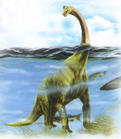 |
||||||||||||||||||||||||||||||||||
| (2)Three Horns Dinosaurs: The bone plates and bone films of Sword Dinosaurs and ceratopsian could only be used for passive defense but could not fight back. This situation was not changed until the three-horns dinosaurs appeared. The tree- horns dinosaurs was the largest in volume among horns dinosaurs, with two spear-like horns on the head and another bump in a corner between the eyes and nostrils. Such sharp weapons, even the most terrible carnivorous dinosaurs were afraid of. |
||||||||||||||||||||||||||||||||||
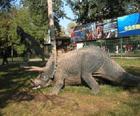 |
||||||||||||||||||||||||||||||||||
| (3)Stegosaurus: The stegosaurus appeared one hundred and fifty million years ago, its largest characteristic was its two bone panels on the back as well as the sharp spines on the tail. Stegosaurus was an herbivorous dinosaur with slow action, its body panels and sharp spines on the tail became the best defense to avoid the carnivorous dinosaurs. |
||||||||||||||||||||||||||||||||||
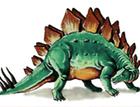 |
||||||||||||||||||||||||||||||||||
| (4)Ankylosaurus: Stegosaurus had bony panels to protect the body, but the place that the panel could not cover was easy to be attacked. When the Stegosaurus gradually disappeared, the ankylosaurus which covered by bone panels on the whole body replaced them. The ankylosaurus seemed like impregnable tank car; even the Tyrannosaurus had no means to attack them |
||||||||||||||||||||||||||||||||||
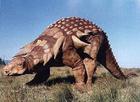 |
||||||||||||||||||||||||||||||||||
| (5)Tyrannosaurus: Tyrannosaurus was the largest and most brutal carnivorous dinosaurs; the time when the Tyrannosaurus appeared was already the end of the dinosaurs’ era, which was about eight million years before. The Tyrannosaurus’ body was as high as 14 meters and weighed about 10 metric tons tonnes, with thick and strong rear foot, which could even prop up a rhinoceros. From the discovery of Tyrannosaurus fossil, each of its teeth was as large as an adult's hand; even the eyes were larger than people’s head. Although the majority of the body were staggering large, but a pair of Tyrannosaurus forelimbs were small and short, so that there was no way to have the food into the mouth. The murderer dinosaurs and the Tyrannosaurus had also the similar habits, which were very fierce animals. |
||||||||||||||||||||||||||||||||||
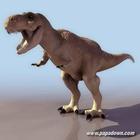 |
||||||||||||||||||||||||||||||||||
| (6)Duck hat dinosaurs: Duck hat dinosaurs were appeared in the end of the dinosaurs’ age the same with the Tyrannosaurus. The most special place of Duck hat dinosaurs was in the head, its flat and long bones looked like the duck's mouth, so the name of duck hat dinosaurs came into being. In the past people thought that the lives of duck head dinosaurs were similar and both lived in water and had water plants as food. Later, scientists found that duck hat dinosaurs didn’t live on aquatic plants when they studied the duck hat dinosaurs, but had the trees on the shore as food instead and goose hat dinosaurs had the same habit with duck hat dinosaurs. |
||||||||||||||||||||||||||||||||||
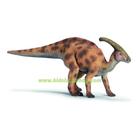 |
||||||||||||||||||||||||||||||||||
| (7)Iguanodon: Iguanodon (academic name: Iguanodon, with the meaning of “teeth of iguana lizards”), Iguanodon was large herbivorous animals, with the body length of about 9-10 m, height of 4-5 m, the former thumb had a sharp claw, may be used against predators. They were mainly living in the Valanginian to Barremian in the early Cretaceous, about 140 million to 120 million years ago; the survival time of them was the mid-period of the time from the hypsilophodon’s first appearance to the most prosperous time of duck-billed dinosaurs. Most of Iguanodon fossils were found in Europe, Belgium, Britain, Germany, in addition, some maybe Iguanodon fossils was unearthed in North America, Asia, Inner Mongolia, and North Africa |
||||||||||||||||||||||||||||||||||
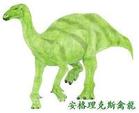 |
||||||||||||||||||||||||||||||||||
| (8)Psittacosaurus: Psittacosaurus was small dinosaur, walking with two legs, heads were short, wide and high, lips like parrots’ beak, hence the name. Its cheekbones were high and outward extension, dental crown was and neck was short. The small dinosaur widely distributed in China in the time of the Late Jurassic to the Early Cretaceous. Psittacosaurus and the original horn dinosaur, Triceratops and other dinosaurs all had a similar parrot's beak with a hook, according to its shape and survival age, scientists inferred that Psittacosaurus were the ancestor of the majority of Ceratopsian. |
||||||||||||||||||||||||||||||||||
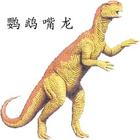 |
||||||||||||||||||||||||||||||||||
| (9)Mamenxi dinosaurs: Mamenxi dinosaur’s neck was supported by the long and mutually pressed cervical spine so it was very stiff and turned up very slowly. It had very strong neck muscles, which supported the small snake-like head. Mamenxi dinosaur was as long as a tennis court, but its body was very "slim." There were many empty holes in its spine; therefore, compared with its large body, the Mamenxi dinosaur appeared very small. 145 million years ago, dinosaurs lived in a region covered with vast and dense forests, with mahogany and red cedar everywhere. Mamenxi dinosaurs drove through the forest in groups, with their small, nail-like teeth biting leaves, as well as those shots on the top of trees that other dinosaurs were out of reach. Mamenxi dinosaurs walked in four foots, with its ??thin and long tail dragging behind. |
||||||||||||||||||||||||||||||||||
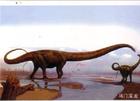 |
||||||||||||||||||||||||||||||||||
 |
(10)pterosaur: Its original intent was "flying reptiles," was a class of very special reptiles, which was able to fly and was likely to be warm-blooded animal. The pterosaur, which appeared in Mesozoic Era Triassic, was the first vertebrate on the earth that was able to fly, but someone suspected that it was only illusory; it could only glide in the sky at best. However, the latest research showed that because of the nerve tissue that dealing with balance of information in the brain fairly well developed, pterosaurs could not only fly like birds, but it’s likely to be flying ace |
|||||||||||||||||||||||||||||||||
Copyright@Lanzhou 24th Middle School The team of night legend 2009-2010 |